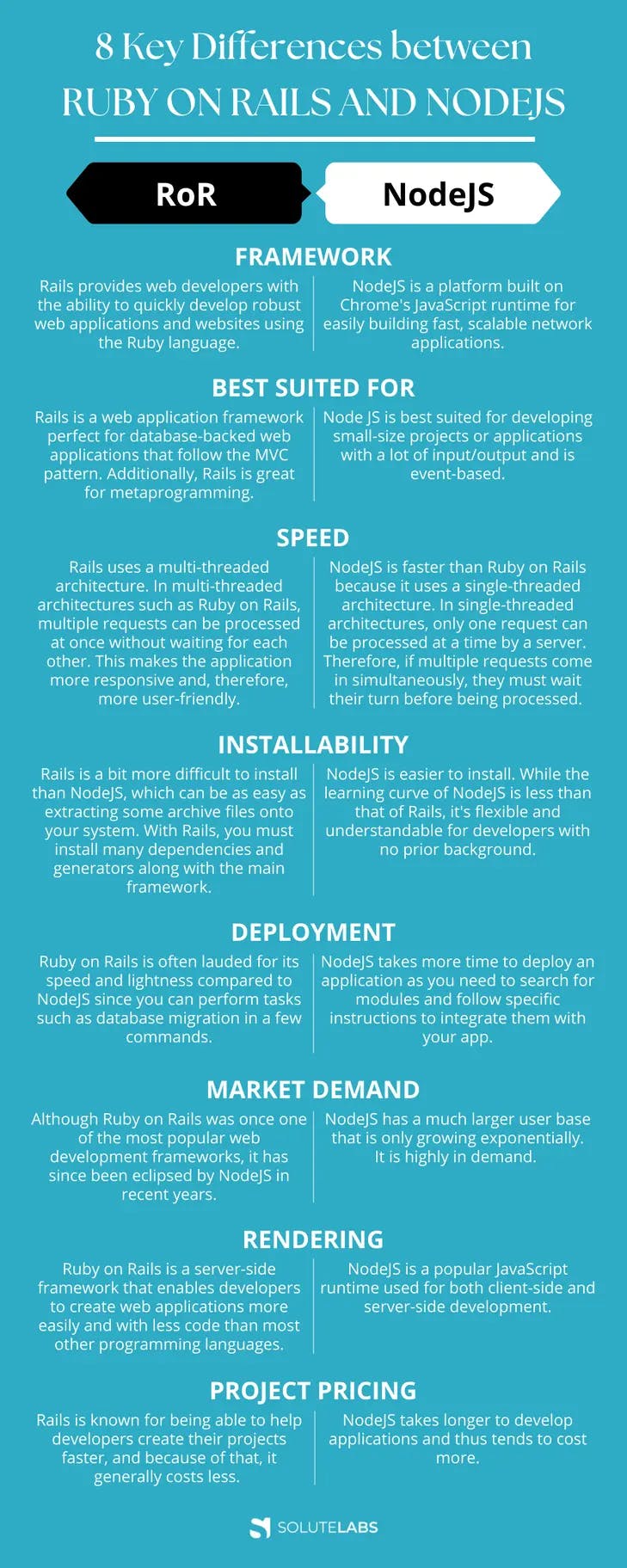With the advancement of web applications, it has become important for developers to choose the right technologies for building the front and back ends of their web-based applications.
When looking at the different technologies available for the front end of your website, it's not too hard to decide. When it comes to front-end development technologies, CSS, HTML5, and JavaScript are the most popular choices. However, for back-end technology, many options are available. Different options make it difficult to understand which technology may provide favorable results.
NodeJS and Ruby on Rails have been gaining popularity lately as leading back end languages. In this blog, you will understand the strengths and weaknesses of both frameworks and how they will impact your next project.
What is Ruby on Rails?
Ruby on Rails (often abbreviated as Rails) is a web application framework written in Ruby. It is a full-stack model view controller (MVC) framework, providing default structures for a database, a web server, and a web application. It encourages and facilitates using web standards such as JSON or XML for data transfer, HTML (for rendering user interfaces), and CSS (for styling).
Rails is an excellent framework for developing database-backed web applications. It is efficient and uses well-known software engineering patterns, including Convention over Configuration (CoC), Don't Repeat Yourself (DRY), and the Active Record pattern.
Ruby on Rails has had a big impact on web app development since it first came out in 2005. It was one of the first frameworks to offer features like seamless database table creation, migrations, and scaffolding of views, which made rapid application development possible.
Other frameworks have borrowed ideas from Ruby on Rails, and you can see its influence today in frameworks like Django (Python), Catalyst (Perl), Laravel, CakePHP and Yii (PHP), Grails (Groovy), Phoenix (Elixir), Play (Scala), and Sails.js (NodeJS).
*Also read: Ruby on Rails for Web Development*
What is NodeJS?
NodeJS is a platform built on Chrome's JavaScript runtime for easily building fast, scalable network applications. NodeJS uses an event-driven, non-blocking I/O model.
NodeJS makes it lightweight and efficient, perfect for data-intensive real-time applications that run across distributed devices.
The server-side runtime environment is a real-time JavaScript application that can run across distributed systems like Linux, Microsoft Windows, and OSx. Its applications are written in JavaScript, making web development much easier. Additionally, there are many helpful JavaScript libraries available through npm websites.
8 Differences between Ruby on Rails and NodeJS

Conclusion
Ruby on Rails and NodeJS frameworks are great for web development, and their load time is lightning fast compared to other languages. But they have their differences in programming languages and their features, performance, and hosting. Ruby on Rails has maximum flexibility, while NodeJS has more easy tech capability.
If your team is adept at JavaScript, then NodeJS may be a better fit for you, even if you were planning on using Ruby. If your team is not as proficient with JavaScript, then you will likely be better off using Rails, as it offers more structure and stability.

